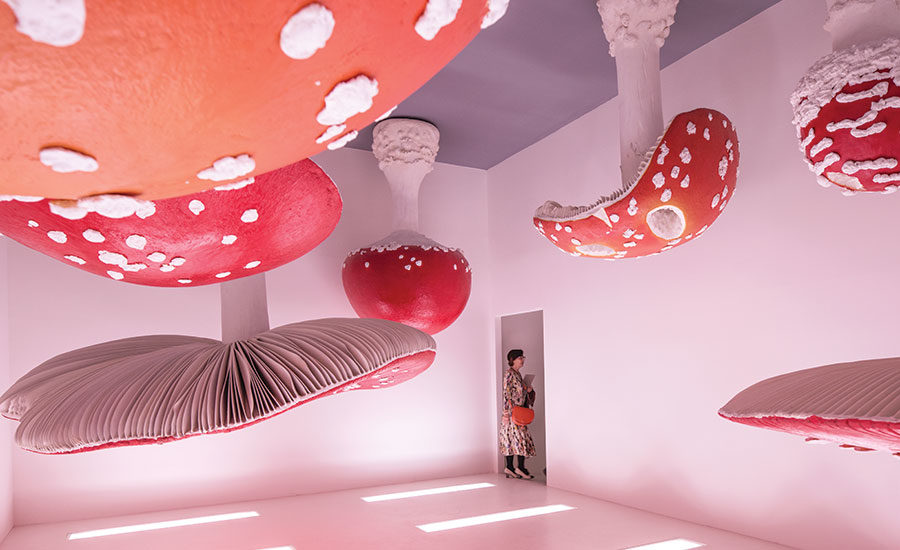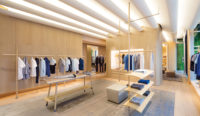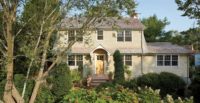A white, luminous, poured-in-place concrete structure looms boldly over the arts complex that the Prada Foundation created in 2015 in a former Milan distillery. The Tower, as this new nine-story exhibition venue is known, adds more edginess to the once-forlorn industrial complex that now includes a gold–leaf covered older building previously used for offices, a mirror-polished stainless-steel auditorium, and various low-rise, rehabbed warehouses used for temporary shows. Designed by the Rotterdam office of OMA and its head, Rem Koolhaas, with partner Christopher van Duijn, the Tower is the last part of the firm’s undertaking for the foundation: the renovation of seven buildings dating back to 1910 and the construction of three new ones. In the few years since the ensemble was opened by the fashion house’s designer, Miuccia Prada, and her husband and business partner Patrizio Bertelli, this agglomeration on the southern edge of the city has become a significant cultural attraction.
Additional Content:
Jump to credits & specifications
At 21,600 square feet, the tower is small, with one gallery per floor on six of the levels, interspersed with three levels that accommodate a café, cloakrooms, and ancillary services. Still, its 200-foot height makes it imposing, as does its location on the northwest corner of the complex, where it faces abandoned railroad tracks and the city beyond. The program responds to a desire by the foundation and its artistic director, Germano Celant, to have one exhibition space where art is displayed in a minimally detailed “white cube” setting. While recognizing that this quiet backdrop is often favored by curators, OMA wanted something more than bland boxy galleries stacked on top of each other in a generic steel-frame structure.
So the architects changed up the spaces by designing both rectangular and wedge-shaped floors, and by raising the galleries’ heights from about 9 feet on the first exhibition level to 26 feet on the uppermost one. As Koolhaas has put it, “These variations produce a radical diversity within a simple volume.” The project leader, Federico Pompignoli, adds that this structure supplements the complex, which “is like an art fair; there is a repertory of gallery types.”
As part of the Tower’s structural solution, post-tensioned concrete decks are cantilevered from the stair/elevator core on the south side of the building; rectangular blocks project over wedge-shaped ones on the north. Since the concrete walls are more than 1½-feet thick, both long and short solid walls act as beams to help carry the weight.
Another structural feature is the concrete “tube” that appears to prop up the south wall. While it resembles a flying buttress, it encloses cables that help pull back the thrust of the cantilevered volumes. The base of the tube is contained within a long, low warehouse structure abutting the tower. While there is a connection to the tower from this older building, the main entrance is on the tower’s north side. Here, off the street, a small, mirrored lobby is dominated by a large three-dimensional aperture in the ceiling that is discombobulating in the way it reveals stairs going to the first level. You feel as if you might be vacuumed up by it on your way to the galleries.
Circulation swallows up a large part of the space on each floor, so the architects made sure the experience was not boring: stairways bring together a mix of glass, aluminum, and particleboard with a casual elegance and attention to detail. The elevator cab is lined in a rose-colored onyx, intensified by being steeped in pink paint for two months, then mounted on glass panels and backlit—definitely not boring. The café, too, is sui generis: designed by OMA and Prada, it contains furniture bought from the former Four Seasons restaurant in New York’s Seagram Building, along with artworks by Lucio Fontana and others.
The permanent exhibition, Atlas, curated by Prada and Celant, focuses appropriately on fashionable art created between 1960 and 2016. Several galleries burst with color, most vividly Jeff Koons’s Tulips, on the second floor, and Carsten Höller’s Upside Down Mushroom Room on the ninth level. All the installations, including those by Damien Hirst and Walter de Maria, underscore the dramatic advantage of column-free spaces.
The Tower offers an intriguing twist on the typology of the white cube by means of its structural high-wire act. Yet, given the unique site and program, it doesn’t seem likely to become a typology that could be used again. It is an imaginative one-off proposition, just right for this situation. It helps to have a client willing to sign on to the cost of the complex construction process. It also is good to have faithful cognoscenti who don’t mind spending almost as much time moving up and down the stairs and elevators as they do actually looking at the art.
CreditsOMA Team Partners in charge: Rem Koolhaas, Chris van Duijn
Project leader: Federico Pompignoli
Schematic Design: Alexander Reichert, Sam Aitkenhead, Doug Allard, Andrea Bertassi, Aleksandr Bierig, Eva Dietrich, Paul-Emmanuel Lambert, Jonah Gamblin, Joshua Beck, Takuya Hosokai, Stephen Hodgson, Jan Kroman, Jedidiah Lau, Francesco Marullo, Vincent McIlduff, Alexander Menke, Aoibheann Ni Mhearain, Sophie van Noten, Jan Pawlik, Rocio Paz Chavez, Christopher Parlato, Ippolito Pestellini Laparelli, Dirk Peters, Andrea Sollazzo, Michaela Tonus, Jussi Vuori, Luca Viglieo, Mei-Lun Xue
Design Development: Anna Dzierzon, Jonah Gamblin, Ross Harrison, Hans Hammink , Matthew Jull, Taiga Koponen, Vincent Konate, Andres Mendoza, Susanan Mondejar, Vincent McIlduff, Federico Pompignoli, Sasha Smolin, Michaela Tonus
Construction Documentation: Katarina Barunica, Marco Cimenti, Cecilia Del Pozo Rios, Anita Ernödi, Felix Fassbinder, Peter Feldmann, Siliang Fu, Romina Grillo, Jonah Gamblin, Clive Hennessey, Taiga Koponen, Roy Lin, Debora Mateo, Vincent McIlduff, Andres Mendoza, Federico Pompignoli, Arminas Sadzevicius, Magdalena Stanescu, Lingxiao Zhang
Construction Administration: Mariacristina Agnello, Katarina Barunica, Emilio Boiardi, Matteo Budel, Marco Cimenti,, Chris van Duijn, Anita Ernödi, Felix Fassbinder, Peter Feldmann, Siliang Fu, Jonah Gamblin, Andrea Giovenzana, Romina Grillo, Clive Hennessey, Marianna Katenko, Taiga Koponen, Nicolas Lee, Roy Lin, Débora Mateo, Vincent McIlduff, Andres Mendoza, Enzo Nercolini, Pawel Panfiluk, Caterina Pedò, Marton Pinter, Cecilia del Pozo, Victor Pricop, Arminas Sadzevicius, Magdalena Stanescu, Davide Troiani, Michele Zambetti, Lingxiao Zhang
Collaborators: Local Architects: Atelier Verticale
Structural Engineer: Favero & Milan
MEP Engineer: Favero & Milan, Prisma Engineering
Fire Engineer: GAE Engineering |
SpecificationsFacades: Zanetti srl
Special Facades: AZA-Aghito Zambonini
Glass Sheets: Interpane
Anodized Aluminum and Interiors: Respedil
Special Interiors: Marconi Arredamenti
Aluminum Foam: Cymat Technologies
Steel Structures and Concrete Structures: Colombo Costruzioni
Mechanical Plants: Tono Impianti
Electrical and Special Plants: Alpiq
Special Blacksmith Works: OMMG SRL |



























Post a comment to this article
Report Abusive Comment